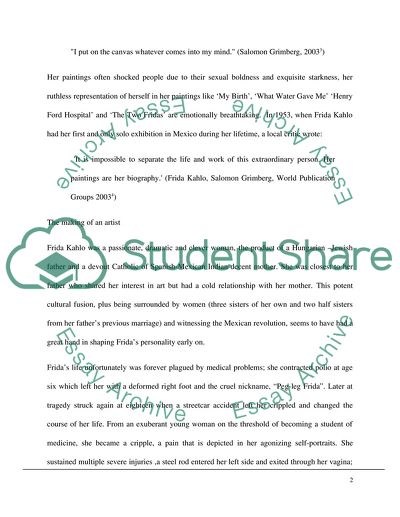Cite this document
(“Frida Kahlo and Surrealism Movement Essay Example | Topics and Well Written Essays - 2000 words”, n.d.)
Retrieved from https://studentshare.org/visual-arts-film-studies/1549567-frida-kahlo-and-surrealism-movement
Retrieved from https://studentshare.org/visual-arts-film-studies/1549567-frida-kahlo-and-surrealism-movement
(Frida Kahlo and Surrealism Movement Essay Example | Topics and Well Written Essays - 2000 Words)
https://studentshare.org/visual-arts-film-studies/1549567-frida-kahlo-and-surrealism-movement.
https://studentshare.org/visual-arts-film-studies/1549567-frida-kahlo-and-surrealism-movement.
“Frida Kahlo and Surrealism Movement Essay Example | Topics and Well Written Essays - 2000 Words”, n.d. https://studentshare.org/visual-arts-film-studies/1549567-frida-kahlo-and-surrealism-movement.


